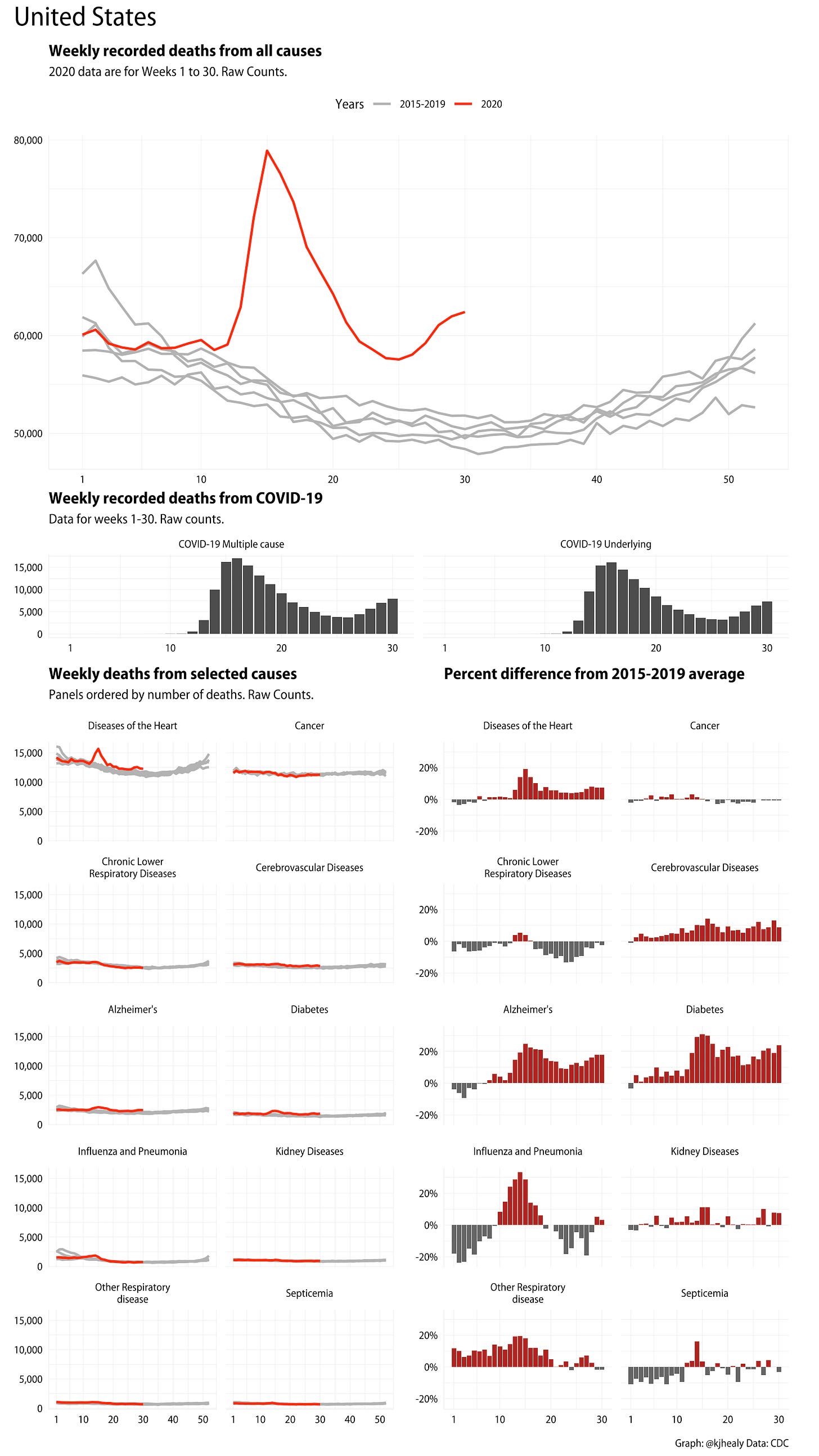Issue 28: The Next 200,000
09.26.20 | When taking things day by day leads you to unimaginable places
Hello,
We move step-wise into the strangest places. Each new adjustment seems to follow logically from the last, until you look back at where you came from and realize you can’t recognize yourself or the world around you, can’t believe you made it from there to here and can’t for the life of you figure out how to get back. Because everything’s too different. And if you’d known this is where you were headed, you would have stopped.
Little versions of this story happened everywhere across the country this week, as we step-wise climbed past two hundred thousand officially diagnosed deaths from the novel Coronavirus. One of these stories was tweeted out as a thread by an NYU neuroscience professor, which I encourage you in the strongest terms to click through and read, because it’s a surreal story told in a hilarious way, and I want to lighten the mood a bit given the circumstances.

Bavel’s story is nested within another, much larger-scale arc, of how we collectively made it from the lives we lived in February to … whatever it is that we’re living in now. Sure it’s absurd to imagine lecturing by phone while trapped in an elevator with your kids. But the broader conditions that make that story possible would have been equally unimaginable back in February: that 300+ college students would be streaming in to their lecture over the internet from all around the world because that’s just how we provide higher ed now; that local primary schools would all be closed, stranding kids with their parents for months on end.
If someone had told us, back in late February when the first Covid death was reported in the U.S., that seven months later two hundred thousand people would be dead and normal public social life would be completely suspended for so long that people would literally start losing their social skills — well, how clearly could you have imagined it?
Of course people were telling us that, in broad strokes, back in late February and early March. That message, from CDC officials and from other public health experts, was muddied by — well you know what happened (there was a nicely done package on All Things Considered Friday evening re-tracing the story). The trouble with telling people that one day the virus will disappear like a miracle is that each day you wake up wondering if this is the day, and instead a thousand people lose their lives. And that’s how we lost 200,000 people to this virus. One day at a time.
What those same experts who warned us in February and March are telling us now is that the beginning of the end of this pandemic isn’t going to come until the second or third quarter of 2021, when a vaccine is widely distributed. In other words in all likelihood we’re barely half-way through this. It’s helpful to stop for a moment and think long-term about what that means, and where we might end up, going one day at a time. For a pretty good look at the months and years ahead, check out this feature from STAT News.
Meanwhile Sociologist Kieran Healy this week put out an elegant visualization of all-cause mortality data for this year, as plotted against 2015-2019:

On the top chart the red line shows a count of total deaths from all causes in the U.S. through the first thirty weeks of 2020, ending in July. The gray lines are that same count for the five previous years. The first thing you notice is just how much more death we’re seeing this year than the historical average, thanks to the pandemic. The second thing to notice is the trajectory we’re on as the red line ends. The most recent CDC Covid mortality forecasts predict a steady death rate for the next four weeks. At the risk of stating the obvious, steady is good because it means a surge isn’t likely in the near term. It’s also terrible, because it means we’ll keep waking up to another seven hundred or so dead every day for the next four weeks. And after that? Mortality usually rises in the cold autumn and winter months no matter what — for a lot of reasons, including the flu season and the fact that heart attacks are much more common in cold weather. And there’s the real possibility of a catastrophic, full-on second wave of the pandemic this winter.
Nobody can know for certain, and your dedicated staff at The Covodyssey aren’t epidemiologists, but looking at these trends and what we know about what’s already transpired in this pandemic, it’s easier to see why public health experts have increasingly pessimistic outlooks for the winter. For the rest of the year 2020 the next four weeks might be as good as it gets.
// Quick Link Roundup
A super quick link roundup this week. So short, in fact, it’s just this excellent 13-minute documentary from the Times, exploring the history of emerging infectious diseases and how the global economy and climate change set the stage for this pandemic and are driving us towards the next ones. You’ll learn a lot.
That’s it for this week. I hope you’re not reading this from a stuck elevator. See you next week!
